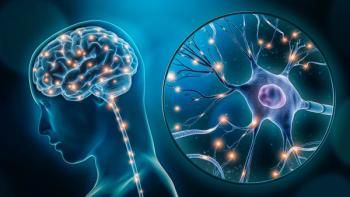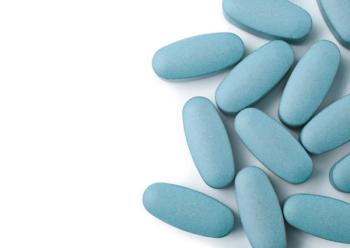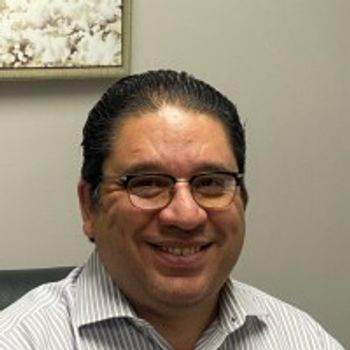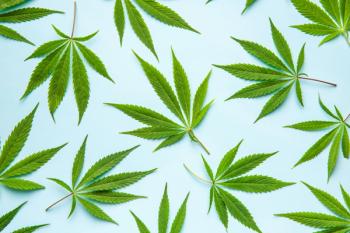
- Psychiatric Times Vol 25 No 12
- Volume 25
- Issue 12
Psychiatric Comorbidity Associated With Pathological Gambling
Gambling has become a major recreational activity in the United States. Formerly confined to a few states such as Nevada and New Jersey, legal gambling opportunities have exploded across the nation in the past 2 decades.
Gambling has become a major recreational activity in the United States. Formerly confined to a few states such as Nevada and New Jersey, legal gambling opportunities have exploded across the nation in the past 2 decades. Some form of legalized gambling now exists in all but 2 states: 37 have lotteries, and 27 have casino gambling. Recent estimates indicate that 70% to 90% of North Americans have engaged in some form of gambling.1 Between 1974 and 1997, gambling expenditures more than doubled as a percentage of personal income.
Although disordered gambling has been recognized for centuries, criteria for pathological gambling (PG) were first specified in 1980 in DSM-III. Although categorized as an impulse control disorder (ICD), the current criteria are patterned after those used for substance dependencies and emphasize the features of tolerance and withdrawal, both of which have been described in persons with PG and in those with substance dependence.2 Ten specific maladaptive behaviors are enumerated, and 5 or more are required for the diagnosis.
EPIDEMIOLOGY OF PG
Although most persons gamble responsibly, approximately 5.5% of those in the general population are problematic gamblers.3 PG-the most severe form of problematic gambling-affects 1% to 2% of the adult general population. These figures suggest that more than 2 million Americans suffer from PG; roughly twice that many have gambling-related difficulties but do not meet DSM-IV criteria.4,5 There is evidence that the prevalence of PG is increasing along with the ever-expanding availability of gambling venues.6-8
One-quarter to one-third of all persons with PG are women, but the gap is narrowing.9 (See the case vignette.) Women tend to begin gambling later in life, often in their early 30s, compared with men who start in their late teens or early 20s. Women tend to have a more rapid progression to PG.10,11
Special populations at risk for PG include adults with mental health or substance use disorders, persons who have been incarcerated, African Americans, and persons of lower socioeconomic status.12 However, the typical profile of a treatment-seeking gambler is one who is white, middle-aged, married, and employed, with a relatively low level of education.
Research has not empirically validated proposed subtypes, but the most widely discussed scheme is the distinction between “escape-seekers” and “sensation-seekers.”12,13 Escape-seekers are often older persons who gamble out of boredom or depression or to fill time, and they may choose passive forms of gambling, such as slot machines, lotteries, and scratch tickets. Sensation-seekers tend to be younger and prefer card games or table games, sports betting, or other gambling that involves some elements of skill and suspense.
PUBLIC HEALTH CONSEQUENCES OF PG
PG is increasingly being recognized as a major public health problem. The greater attention focused on PG was spurred in part by a commission formed by President Clinton that documented its negative impact on individuals and society.4 PG is estimated to cost society approximately $5 billion per year and an additional $40 billion in lifetime costs for reduced productivity, social services, and creditor losses.4 The disorder impairs quality of life,14 and is associated with comorbid psychiatric disorders, psychosocial impairment, and suicide.15,16 Family-related problems include financial distress, child and spousal abuse, and separation and divorce.17
PSYCHIATRIC COMORBIDITY
Psychiatric comorbidity is the rule, not the exception, for persons with PG. Clinicians who assess and treat these individuals benefit from understanding the scope and direction of these associations. In addition to evaluating the person’s gambling behavior and its considerable impact on their lives, clinicians need to thoroughly assess current and lifetime psychiatric comorbidity. The following case vignette illustrates how PG and depression can intertwine.18
Case Vignette
Mary, a 42-year-old accountant, had gambled recreationally for years. She had a history of depressive disorder and had brief contacts with a mental health center because of depression and marital discord. At age 38, she became hooked on casino slot machines. Her interest in gambling gradually escalated and, within a year, Mary was gambling during most business days.
To acquire funds to fuel her gambling, she created a fake company to which she transferred more than $300,000 from her accounting firm. The embezzlement was eventually detected and Mary was arrested. She became severely depressed and suicidal in the wake of the arrest and public humiliation and attempted a drug overdose. After a brief hospital stay, Mary entered counseling and was treated with paroxetine. In a plea bargain, she agreed to perform 400 hours of community service.
ASSESSING PSYCHIATRIC COMORBIDITY
The psychiatric history should be carefully explored because many persons with PG will meet criteria for comorbid psychiatric disorders (eg, alcohol dependence, major depression, anxiety disorder, personality disorder, or another disorder of impulse control). The presence of comorbid disorders may also suggest particular medication treatment strategies or psychotherapeutic approaches. For example, the depressed person who is a pathological gambler will benefit from antidepressant medication and cognitive-behavioral therapy. This dual approach may reduce the gambling behavior-particularly when the behavior had been prompted by the patient’s need to escape.
Inquire about past psychiatric treatment, including medications used, hospitalizations, and psychotherapy. Bipolar disorder should be ruled out as the cause of the disorder because some persons with PG may gamble excessively when manic. Typically, the patient’s unrestrained spending corresponds to episodes of mania that are accompanied by euphoric mood; grandiosity; unrealistic plans; and often a giddy, overly bright affect.
The pattern of gambling seen in the person with PG lacks the periodicity seen with bipolar patients, and points to an ongoing preoccupation.
The patient’s history of physical illness, surgeries, drug allergies, and medical treatment can help rule out medical causes that may be causing symptoms (eg, mass lesions) or may identify conditions that may contraindicate the use of certain medications prescribed to treat the disorder.
RESEARCH FINDINGS ON COMORBIDITY
Most comorbidity research in PG has been hampered by biased ascertainment, small samples, and unsystematic assessments. Yet both community- and clinic-based studies suggest that substance use disorders, mood and anxiety disorders, and personality disorders are highly prevalent in persons with PG.18,19
Substance use disorders
Substance misuse has a clear relationship with PG. The National Opinion Research Center study found that the rate of alcohol or drug abuse was nearly 7 times higher in persons with PG than in nongamblers or in recreational gamblers.4
Surveys from specific geographical areas support these findings: rates of alcohol and dependence were at least 4 times higher among persons identified as having a gambling disorder than among those without a gambling disorder.9,20-22 In a nationally representative sample, almost three-quarters (73.2%) of persons with PG had an alcohol use disorder as well.23 There is some evidence that PG predicts the subsequent onset of substance misuse.24
Gerstein and colleagues4 found that 8.1% of persons with PG and 16.8% of persons with problem gambling (ie, those who met 3 or 4 DSM-IV criteria for PG), reported illicit drug use in the past year. These figures compared with 4.2% in recreational gamblers and 2% in nongamblers. Bland and coworkers21 also found that the prevalence of illegal drug abuse and dependence among individuals with PG was about 4 times higher than among nongamblers. In a 1998 general population study, 15.5% of persons with PG evidenced illegal drug use disorders, compared with 7.8% of recreational gamblers and 3.5% of nongamblers.9 In a national survey, the lifetime prevalence rate for any drug use disorder was 38.1% among PG respondents.23 Conversely, from 9% to 16% of substance abusers are probable pathological gamblers.25,26
A number of differences emerge from looking at treatment-seeking persons with a history of substance misuse and at pathological gamblers who have no history of substance misuse. Those with such a history report greater psychiatric distress, more frequent gambling, and more years of disordered gambling; they were also more likely to be receiving mental health care treatment.27
Mood disorders
Three general population surveys have investigated the association of disordered gambling and psychiatric comorbidities, including major depression, dysthymia, bipolar, and suicidality. Bland and associates21 found higher rates of mood disorders in pathological gamblers than in non-gamblers (33.3% vs 14.2%, respectively). Rates of major depression were also higher among pathological gamblers in the sample reported by Cunningham-Williams and coworkers.9 These investigators also found that recreational gamblers are at greater risk for major depression and dysthymia than are those who have never gambled. Neither of these 2 surveys found a significant association between PG and mania.
The most recent of the general population surveys-and the largest to date- reported that 49.6% of persons with PG have a mood disorder.23 This survey established that mania was the mood disorder most strongly related to PG (odds ratio [OR], 8). The OR for major depression and dysthymia were each 3.3, and 1.8 for hypomania. In the DSM-IV, criterion B for PG states “the gambling behavior is not better accounted for by a manic episode.” Thus, the clinician must determine whether the patient was gambling excessively when manic or whether his or her gambling fit the more chronic pattern of PG.
Mood disorders are also relatively common in the treatment-seeking segment of the PG population. One study found that 12% of 592 PG treatment-seekers also had a current mood disorder.28 Another reported that 60% of PG subjects who had been recruited from classified advertisements met lifetime criteria for a mood disorder.15
Anxiety disorders
If we look again at our general population surveys, we find a strong association between PG and anxiety disorders. For example, Kessler and colleagues24 found that 60.3% of those in their sample had any anxiety disorder: 52.2% had phobias, 21.9% had panic disorder, 16.6% had generalized anxiety disorder (GAD), and 14.8% had posttraumatic stress disorder. These authors also found that PG is temporally predicted by panic disorder, GAD, and phobia.
Petry and associates23 reported that panic disorder with and without agoraphobia was most strongly related to PG; the odds of having phobias or GAD were significant, but less so. Cunningham-Williams and coworkers9 also found that the highest percentage of participants experienced panic disorder (23.3%); this was followed by phobias (14.6%), GAD (7.7%), and obsessive-compulsive disorder (OCD, 7.7%). Likewise, Bland and coworkers21 found that persons with PG had high rates of anxiety disorders. These authors reported lifetime rates of 26.7% for GAD, 17.7% for phobias, 16.7% for OCD, and 3.3% for panic disorder.
In their sample of 43 treatment-seeking outpatients, Ibez and colleagues29 found a lifetime GAD rate of 7.2%. This was much lower than the 40% reported by Black and Moyer15 and the 37.5% by Specker and associates.30 Black and Moyer also found rates for panic disorder and OCD of 10% each, while Specker and colleagues reported rates of 20% and 2.5%, respectively. While samples and rates differ somewhat, there remains little doubt that PG and anxiety disorders are associated.
Some investigators believe that PG falls within the obsessive-compulsive spectrum. They point to similarities between PG and OCD exemplified by persistent thoughts and urges followed by repetitive behaviors. However, there are major differences as well-OCD is unwanted, while gambling is generally perceived as plea-surable. Comorbidity studies suggest that from 2.5% to 20% of persons with PG also have OCD.30,31 But in 2 family studies of OCD that also looked at PG, there were few data to support the existence of a relationship between these disorders.32,33
ADHD
PG has a number of attributes in common with attention-deficit/hyper-activity disorder (ADHD), and clinical data suggest substantial overlap. Goldstein and coworkers34 concluded that the electroencephalographic activation patterns to right and left brain tasks seen in 8 men with PG resembled those in unmedicated children with attention deficit disorder. Carlton and Manowitz35 showed that persons with PG and those with alcoholism had excessive and comparable levels of ADHD-related behaviors in their childhood, much more so than did control subjects.
Rugle and Melamed36 compared 33 non–substance-abusing persons with PG with 33 nonaddicted controls on 9 attention measures and childhood behavior questionnaires. Persons with PG performed significantly worse than controls on higher-order attentional measures; those with PG also exhibited more childhood behaviors consistent with ADHD. The authors concluded that attention deficits and the associated behavior problems are long-standing and may be a risk factor for PG.
Specker and colleagues37 reported that 8 of 40 (20%) persons with PG met criteria for ADHD, and another 7 (17.5%) had symptoms that were considered subthreshhold. These authors hypothesized that ADHD may predispose to substance abuse or PG, and that gamblers with attention deficits might choose gambling activities that do not require sustained attention or concentration.
Finally, Kessler and colleagues24 found in their general population survey that 13.4% of persons with PG also had ADHD.
Impulsivity, an important attribute of ADHD, is also reported to be common among persons with PG. Castellani and Rugle38 evaluated 843 persons who had been admitted to an inpatient addictions unit with a primary diagnosis of PG, alcohol dependence, or cocaine abuse. Those with PG scored significantly higher than alcoholics and cocaine abusers on measures of impulsivity, such as coming to quick decisions, moving quickly from impulse to action, and lack of future planning. DeCaria and colleagues39 found higher levels of impulsivity in persons with PG than in cocaine abusers, alcoholics, polysubstance abusers, and depressed patients as measured by the Barrett Impulsiveness Scale.
Impulse control disorders
PG and its comorbidity with other ICDs has not been studied as thoroughly as other Axis I disorders, although rates of ICDs appear higher in persons with PG than in the general population. Investigators have reported rates ranging from 18% to 43% for 1 or more ICD.15,37,40
Specker and colleagues37 examined rates of ICDs in a treatment-seeking sample and found increased levels of compulsive shopping and sexual behaviors, intermittent explosive disorder, and kleptomania. Black and Moyer15 found high rates of compulsive buying (23%), compulsive sexual behavior (17%), and intermittent explosive disorder (13%) in their sample. Grant and Kim40 showed lower rates of these behaviors in a larger sample: compulsive sexual behavior (9%), compulsive buying (8%), and intermittent explosive disorder (2%).
Individuals with one ICD, such as PG, appear more likely to have a second ICD.41-43
Personality disorders
When reviewing the literature on prevalence rates of personality disorders (PDs), the type of assessment tool used must be carefully noted. Those studies that employ self-report instruments consistently yield higher rates of PD than those that use semistructured interviews. For example, prevalence rates of PD ranged from 87% to 93% among pathological gamblers assessed with self-report instruments; those rates compared with 25% to 61% among persons who were assessed in a structured or semi-structured interview.44
Bagby and colleagues44 used both a self-report and a semistructured interview in their study of 204 pathological gamblers. As expected, PD prevalence rates with the self-report measure were high (92%); they were lower with the interview tool (23%). These investigators found that only those with borderline personality disorder (BPD) had consistently high and significant prevalence rates in their non–treatment-seeking samples across both types of measures. Because impulsivity and mood dysregulation are hallmarks of both BPD and PG,45 it follows that BPD would distinguish PG from other disorders.
Fernndez-Montalvo and Echebura46 also used a structured clinical interview in their study of 50 non–treatment-seeking pathological gamblers. BPD was the most prevalent PD at 16%; this was followed by antisocial, paranoid, narcissistic, and nonspecified disorder, which were each observed in 8% of patients. The authors also found that the presence of a PD is associated with greater gambling severity and more severe anxiety, depression, and alcohol abuse.
In a general population survey,23 a robust association was found between PG and all the PDs studied. The odds of having any PD if one also has PG were 8.3 times greater than for the general population. The OR of having histrionic PD was 6.9; avoidant PD, 6.5l; paranoid, 6.1; antisocial, 6.0; dependent, 5.5; schizoid, 5.0; and obsessive-compulsive PD, 4.6. The borderline, narcissistic, and schizotypal types were not assessed.
Antisocial personality disorder (ASPD)-a condition marked by a pervasive pattern of poor social conformity, deceitfulness, impulsivity, criminality, and lack of remorse beginning before the age of 15-occurs at relatively high rates among those with PG disorder. Slutske and coworkers,47 in the largest community-based study to examine this relationship, found that the odds of a lifetime diagnosis of ASPD were 6.4 times greater among persons who had a lifetime history of PG. Fifteen percent of their sample of pathological gamblers also had ASPD, compared with 2% of the comparison sample without PG.
Pietrzak and Petry48 compared treatment-seeking pathological gamblers with and without ASPD. Those with ASPD had more severe gambling and more medical and drug-related problems; they scored higher on symptom measures of somatization, paranoid ideation, and phobic anxiety. They were also more likely to be younger, male, less educated, divorced, or separated, and to have had a history of substance abuse treatment than their non-ASPD counterparts.
Dimensional personality traits have also been reported in persons with PG. Nordin and Nylander49 used the Temperament and Character Inventory (TCI)50 and found that those with PG scored higher on novelty seeking and harm avoidance, and scored lower on self-directedness. This finding indicates that pathological gamblers were less responsible, purposeful, and self-acceptant, and had less impulse control than did their non-PG matches.
Recently, Forbush and colleagues51 reported TCI findings in a comparison of persons with PG and matched controls. They found high levels of novelty seeking, impulsivity, and harm avoidance, and lower levels of self-directedness and cooperativeness.
Conclusion
In summary, the literature suggests a clear connection between PG; addictive, mood, and anxiety disorders; ADHD; and Axis II disorders (particularly antisocial disorder and BPDs). Other ICDs are also frequently comorbid. While the precise mechanism behind these observations is unclear, there are several possible explanations. An Axis I disorder (eg, major depression) could be primary and lead to the secondary development of traits and behaviors found in PG. PG and the Axis I disorder could be unrelated, but they are common in patient populations and tend to co-occur and influence one another. Finally, PG and certain Axes I and II disorders may have common causes that increase their co-occurrence. For example, Slutske and colleagues47 have reported that a genetic relationship exists among PG, substance use disorders, and ASPD.
Future investigations should consider the role of comorbid disorders on course and outcome, illness progression, and treatment. We are currently conducting a family study that will help to tease apart these etiological possibilities, and (we hope) will lead to a better understanding of the relationship among the disorders and their consequences.
References:
References
1. Raylu N, Oei TP. Pathological gambling: a comprehensive review. Clin Psychol Rev. 2002;22:1009-1061.
2. American Psychiatric Association. Diagnostic and Statistical Manual of Mental Disorders, Fourth Edition, Text Revision. Washington, DC: American Psychiatric Association; 2000.
3. Shaffer HJ, Hall MN, Vander Bilt J. Estimating the prevalence of disordered gambling behavior in the United States and Canada: a research synthesis. Am J Public Health. 1999;89:1369-1376.
4. Gerstein DR, Volberg RA, Toce MT, et al. Gambling Impact and Behavior Study: Report to the National Gambling Impact Study Commission. Chicago: National Opinion Research Center; 1999.
5. Cunningham-Williams RM, Cottler LB. The epidemiology of pathological gambling. Semin Clin Neuropsychiatry. 2001;6:155-166.
6. Volberg RA, Steadman HJ. Problem Gambling in Iowa. Delmar, NY: Policy Research Associates, Inc; 1989.
7. Volberg RA. Gambling and Problem Gambling in Iowa-A Replication Survey. Report to the Iowa Department of Human Services. Roaring Spring, PA: Gemini Research; July 28, 1995.
8. Ladouceur R, Jacques C, Ferland F, Giroux I. Prevalence of problem gambling: a replication study 7 years later. Can J Psychiatry. 1999;44:802-804.
9. Cunningham-Williams RM, Cottler LB, Compton WM 3rd, Spitznagel EL. Taking chances: problem gamblers and mental health disorders-results from the St Louis Epidemiologic Catchment Area Study. Am J Public Health. 1998;88:1093-1096.
10. Grant JE, Kim SW. Gender differences in pathological gamblers seeking medical treatment. Compr Psychiatry. 2002;43:56-62.
11. Tavares H, Zilberman ML, Beites FJ, Gentil V. Gender differences in gambling progression. J Gambl Stud. 2001;17:151-159.
12. Potenza MN, Kosten TR, Rounsaville BJ. Pathological gambling. JAMA. 2001;286:141-144.
13. Petry NM. A comparison of treatment-seeking pathological gamblers based on preferred gambling activity. Addiction. 2003;98:645-655.
14. Black DW, Moyer T, Schlosser S. Quality of life and family history in pathological gambling. J Nerv Ment Dis. 2003;191:124-126.
15. Black DW, Moyer T. Clinical features and psychiatric comorbidity of subjects with pathological gambling behavior. Psychiatr Serv. 1998;49:1434-1439.
16. Petry NM, Kiluk BD. Suicidal ideation and suicide attempts in treatment-seeking pathological gamblers. J Nerv Ment Dis. 2002;190:462-469.
17. Shaw MC, Forbush KT, Schlinder J, et al. The effect of pathological gambling on families, marriages, and children. CNS Spectr. 2007;12:615-622.
18. Argo T, Black DW. The characteristics of pathological gambling. In: Grant J, Potenza M, eds. Understanding and Treating Pathological Gambling. Washington, DC: American Psychiatric Publishing Inc; 2004:39-53.
19. Crockford DN, el-Guebaly N. Psychiatric comorbidity in pathological gambling: a critical review. Can J Psychiatry. 1998;43:43-50.
20. Grant JE, Kim SW. Comorbidity of impulse control disorders in pathological gamblers. Acta Psychiatr Scand. 2003;108:203-207.
21. Bland RC, Newman SC, Orn H, Stebelsky G. Epidemiology of pathological gambling in Edmonton. Can J Psychiatry. 1993;38:108-112.
22. Smart RG, Ferris J. Alcohol, drugs and gambling in the Ontario adult population, 1994. Can J Psychiatry. 1996;41:36-45.
23. Petry NM, Stinson FS, Grant BF. Comorbidity of DSM-IV pathological gambling and other psychiatric disorders: results from the National Epidemiologic Survey on Alcohol and Related Conditions. J Clin Psychiatry. 2005;66:564-574.
24. Kessler RC, Hwang I, LaBrie R, et al. DSM-IV pathological gambling in the National Comorbid-ity Survey Replication. Psychological Medicine. Cambridge University Press; 2008. doi:10.1017/ S0033291708002900.
25. Lesieur HR, Blume SB, Zoppa RM. Alcoholism, drug abuse and gambling. Alcohol Clin Exp Res. 1986;10:33-38.
26. Spunt B, Lesieur H, Hunt D, Cahill L. Gambling among methadone patients. Int J Addict. 1995;30: 929-962.
27. Ladd GT, Petry NM. A comparison of pathological gamblers with and without substance abuse treatment histories. Exp Clin Psychopharmacol. 2003;11: 202-209.
28. Stinchfield R, Winters KC. Outcome of Minnesota’s gambling treatment programs. J Gambl Stud. 2001;17:217-245.
29. Ibáñez A, Blanco C, Donahue E, et al. Psychiatric comorbidity in pathological gamblers seeking treatment. Am J Psychiatry. 2001;158:1733-1735.
30. Specker SM, Carlson GA, Edmonson KM, et al. Psychopathology in pathological gamblers seeking treatment. J Gambl Stud. 1996;12:67-81.
31. Linden RD, Pope HD Jr, Jonas JM. Pathological gambling and major affective disorder: preliminary findings. J Clin Psychiatry. 1986;47:201-203.
32. Black DW, Goldstein RB, Noyes R Jr, Blum N. Compulsive behaviors and obsessive-compulsive disorder (OCD): lack of a relationship between OCD, eating disorders, and gambling. Compr Psychiatry. 1994;35: 145-148.
33. Bienvenu OJ, Samuels JF, Riddle MA, et al. The relationship of obsessive-compulsive disorder to possible spectrum disorders: results from a family study. Biol Psychiatry. 2000;48:287-293.
34. Goldstein L, Manowitz P, Nora R, et al. Differential EEG activation and pathological gambling. Biol Psychiatry. 1985;20:1232-1234.
35. Carlton PL, Manowitz P. Behavioral restraint and symptoms of attention-deficit disorder in alcoholics and pathological gamblers. Neuropsychobiology. 1992;25:44-48.
36. Rugle L, Melamed L. Neuropsychological assessment of attention problems in pathological gamblers. J Nerv Ment Dis. 1993;181:107-112.
37. Specker SM, Carlson GA, Christenson GA, Marcotte M. Impulse control disorders and attention deficit disorder in pathological gamblers. Ann Clin Psychiatry. 1995;7:175-179.
38. Castellani B, Rugle L. A comparison of pathological gamblers to alcoholics and cocaine misusers on impulsivity, sensation seeking, and craving. Int J Addict. 1995;30:275-289.
39. DeCaria CM, Hollander E, Grossman R, et al. Diagnosis, neurobiology, and treatment of pathological gambling. J Clin Psychiatry. 1996;57(suppl 8):80-84.
40. Grant JE, Kim SW. Demographic and clinical features of 131 adult pathological gamblers. J Clin Psychiatry. 2001;62:957-962.
41. Black DW, Kehrberg LL, Flumerfelt DL, Schlosser SS. Characteristics of 36 subjects reporting compulsive sexual behavior. Am J Psychiatry. 1997;154: 243-249.
42. McElroy SL, Keck PE Jr, Pope HG Jr, et al. Compulsive buying: a report of 20 cases. J Clin Psychiatry. 1994;55:242-248.
43. Schlosser S, Black DW, Repertinger S, Freet D. Compulsive buying: demography, phenomenology, and comorbidity in 46 subjects. Gen Hosp Psychiatry. 1994;16:205-212.
44. Bagby RM, Vachon DD, Bulmash E, Quilty LC. Personality disorders and pathological gambling: a review and re-examination of prevalence rates. J Personal Disord. 2008;22:191-207.
45. Blaszczynski A, Nower L. A pathways model of problem and pathological gambling. Addiction. 2002;97:487-499.
46. Fernández-Montalvo J, Echeburúa E. Pathological gambling and personality disorders: an exploratory study with the IPDE. J Personal Disord. 2004;18:500-505.
47. Slutske WS, Eisen S, XianH, et al. A twin study of the association between pathological gambling and antisocial personality disorder. J Abnorm Psychol. 2001;110:297-308.
48. Pietrzak RH, Petry NM. Antisocial personality disorder is associated with increased severity of gambling, medical, drug and psychiatric problems among treatment-seeking pathological gamblers. Addiction. 2005;100:1183-1193.
49. Nordin C, Nylander PO. Temperament and character in pathological gambling. J Gambl Stud. 2007; 23:113-120.
50. Cloninger CR, Przybeck TR, Svrakic DM, Wetzel RD. The Temperament and Character Inventory (TCI): a guide to its development and use. St Louis: Center for Psychobiology of Personality, Washington University; 1994.
51. Forbush KT, Shaw M, Graeber MA, et al. Neuro-psychological characteristics and personality traits in pathological gambling. CNS Spectr. 2008;13:306-315.
Articles in this issue
about 17 years ago
Untreated Vets: A “Gathering Storm” of PTSD/Depressionabout 17 years ago
Detainee Interrogations: Important to Remember Our Pastabout 17 years ago
SSRIs, Adolescent Suicide, and the Black Box: Lingering Questionsabout 17 years ago
In the Valley of Elahabout 17 years ago
Topical NSAIDs: Old Wine in a New Bottleabout 17 years ago
Is Diagnosis of Comorbidities Obsolete?about 17 years ago
Patienthood: A Different Form of Beingabout 17 years ago
Underdiagnosing and Overdiagnosing Psychiatric Comorbiditiesabout 17 years ago
Psychiatric Comorbidity in Emergency Department Patientsabout 17 years ago
NIMH Plans Accelerating Research to RemediesNewsletter
Receive trusted psychiatric news, expert analysis, and clinical insights — subscribe today to support your practice and your patients.













